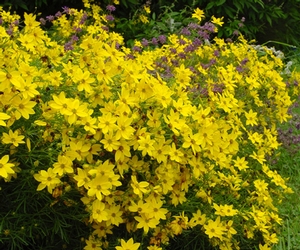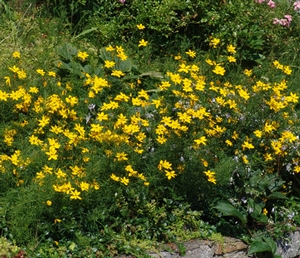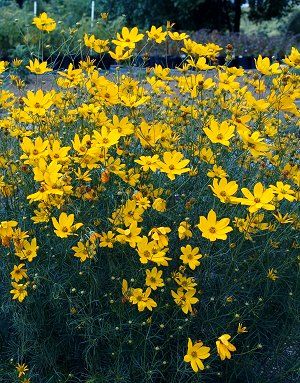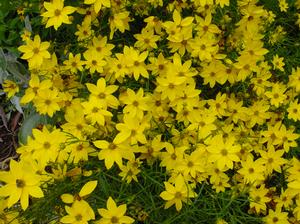Coreopsis verticillata
Common: whorled tickseedCoreopsis verticillata LP50 - 50 per flat
- Height: 18"-24"
- Spread: 18"-24"
- Spacing: 12"
- Hardiness Zone(s): 5-8


Coreopsis verticillata LP50 - 50 per flat



This hardy species is a delightful and tough landscape solution. Taller and more vigorous than 'Moonbeam' or 'Zagreb', it has bright yellow flowers for 8 weeks or more, from late May to early August and often later. Drought tolerant and easy to grow in a garden or along the roadside.
Best growth is in a dry, full sun situation. In fact it is quite drought resistant and a valued plant to use in those types of sites. To propagate, division in spring or fall is the simplest method. -Steven Still, Manual of Herbaceous Ornamental Plants
Not very often do you find a straight species that holds its own against well-loved cultivars and selections but Coreopsis verticillata is one of those cases. Growing 2’-3’ high, it is loosely covered with bright lemon yellow flowers and fine green lacy foliage. Stems and flowers are at varying heights and the billowy blooms move and feel light due to their staggered nature. This plant is drought-tolerant and wonderful in informal sunny gardens and along the edge of walkways and roadsides.
Coming from wood edges, pine savannas, and oak savannas, Coreopsis verticillata is native to Maryland to South Carolina to Kentucky and Tennessee. It prefers sun to lightly shaded sites in sandy, well-drained soil. It does well in garden soil but the water-holding capacity of heavy clay soils can lead to crown rot.
While we find Coreopsis verticillata is looked over in favor of the more popular cultivars like ‘Moonbeam’ and ‘Zagreb’, we enjoy the natural form of the straight species, lending itself to a more informal landscape and less perfectly round and manicured as the cultivars. C. verticillata does have issues with powdery mildew but the lacey foliage makes any disease issues unnoticeable to the casual observer. Coreopsis species support over 40 different species of insects including some predatory insects which are essential for a garden strong ecosystem.